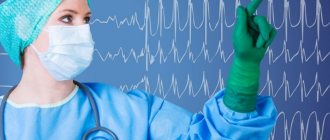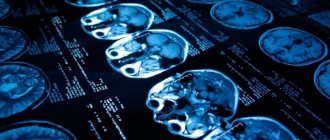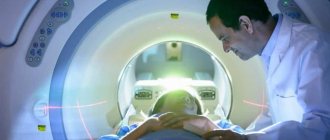what is episyndrome
Episyndrome is sudden and recurring attacks of convulsions in a child, externally similar to epilepsy.
Episyndrome is always a consequence of some disease. The attacks stop as soon as the underlying cause of which they were a symptom is cured.
If for the development of an attack of true epilepsy an epileptic focus is needed (a group of brain cells with increased electrical activity), then with episyndrome there is no such focus, therefore, when examined on an electroencephalogram (EEG), it is not found.
Living with epilepsy
Contrary to popular belief that a person with epilepsy will have to limit himself in many ways, that many roads in front of him are closed, life with epilepsy is not so strict. The patient himself, his loved ones and those around him need to remember that in most cases they do not even need to register a disability. The key to a full life without restrictions is the regular, uninterrupted use of medications selected by a doctor. The brain, protected by drugs, becomes less susceptible to provoking influences. Therefore, the patient can lead an active lifestyle, work (including on the computer), do fitness, watch TV, fly airplanes and much more.
But there are a number of activities that are essentially a “red rag” for the brain of a patient with epilepsy. Such actions should be limited:
- Car driving;
- Working with automated mechanisms;
- Swimming in open water, swimming in a pool without supervision;
- Self-cancellation or skipping pills.
There are also factors that can cause an epileptic attack even in a healthy person, and they should also be wary of:
- Lack of sleep, night shift work, 24-hour work schedule.
- Chronic use or abuse of alcohol and drugs
causes and symptoms of episyndrome
The main cause of episyndrome is oxygen starvation of brain cells, as well as changes in their chemical state.
Such processes develop as a result of birth injuries of the cervical spine, causing a decrease in cerebral blood flow and an increase in intracranial pressure, as well as after various brain injuries (trauma, previous diseases, chemical poisoning).
The development of seizures occurs from irritation of the cerebral cortex or its deep structures and is accompanied by a flash of increased electrical activity of nerve cells (a kind of “short circuit” in the brain).
Quite often, the first attack of seizures in a child develops at elevated temperatures or after vaccination, since in such conditions intracranial pressure increases and oxygen starvation of brain cells increases.
More rare causes of episyndrome are tumors, cysts, parasites, infectious processes of the brain, toxic poisoning, underdevelopment of the brain in cerebral palsy, metabolic disorders.
Externally, an attack of episyndrome is manifested by a sudden increase in tone in the limbs, muscle spasms and twitching both in sleep and while awake, trembling of the limbs, tics, nods, rocking movements of the torso, freezing, rolling of the eyes, twisting of the torso, and cessation of breathing. These attacks are usually not accompanied by loss of consciousness.
Types of epilepsy attacks
Manifestations of epilepsy appear, as we noted, in the form of seizures, and they have their own classification:
- Based on the cause of occurrence (primary epilepsy and secondary epilepsy);
- Based on the location of the original focus, characterized by excessive electrical activity (deep parts of the brain, left or right hemisphere);
- Based on a variant that shapes the development of events during an attack (with or without loss of consciousness).
In a simplified classification of epilepsy attacks, generalized partial attacks are distinguished.
Generalized seizures are characterized by attacks in which there is a complete loss of consciousness, as well as control over the actions performed. The reason for this situation is excessive activation, characteristic of the deep parts of the brain, which subsequently provokes the involvement of the entire brain. The result of this condition, expressed in a fall, is not at all necessary, because muscle tone is disturbed only in rare cases.
As for this type of seizures, such as partial seizures, it can be noted that they are characteristic of 80% of the total number of adults and 60% of children. Partial epilepsy, the symptoms of which manifest themselves when a focus with excessive electrical excitability forms in a particular area in the cerebral cortex, directly depends on the location of this focus. For this reason, manifestations of epilepsy can be motor, mental, autonomic or sensory (tactile) in nature.
It should be noted that partial epilepsy, like localized and focal epilepsy, the symptoms of which represent a separate group of diseases, are based on metabolic or morphological damage to a specific area of the brain. They can be caused by various factors (brain injuries, infections and inflammatory lesions, vascular dysplasia, acute type of cerebrovascular accident, etc.).
When a person is conscious, but with a loss of control over a certain part of the body or when he experiences previously unusual sensations, we are talking about a simple attack. If there is a disturbance of consciousness (with partial loss of it), as well as a person’s lack of understanding of where exactly he is and what is happening to him at the moment, if entering into any contact with him is not possible, then this is a complex attack. As with a simple attack, in this case uncontrolled movements are made in one or another part of the body, and imitation of specifically directed movements often occurs. Thus, a person can smile, walk, sing, talk, “hit a ball,” “dive,” or continue the action that he began before the attack.
Any type of attack is short-term, and their duration is up to three minutes. Almost every attack is accompanied by drowsiness and confusion after its completion. Accordingly, if during an attack there was a complete loss of consciousness or its disturbances occurred, the person does not remember anything about it.
debunking myths about episyndrome
Today, there are a number of misconceptions about the problem of episyndrome, generated mainly by the lack of objective information among parents who are faced with this problem about the causes of episyndrome and the proposed treatment. We will try to clarify this issue and debunk the most popular myths.
Cramps at high temperatures are not a deviation
With normal functioning of the brain, even at high temperatures, seizures do not develop. Convulsions against a background of high temperature indicate a malfunction of the central nervous system.
Seizures indicate the presence of epilepsy
Epilepsy always manifests itself in different types of seizures, but not all seizures indicate the presence of epilepsy. In particular, with episyndrome, seizures develop against the background of oxygen starvation of brain cells.
Seizure attacks are treated with anticonvulsants
Anticonvulsants are used in the presence of an epileptic focus in the brain. In episyndrome, this focus is absent and the drugs do not have the expected effect - the frequency of seizures does not decrease, and sometimes even increases.
Seizures are hereditary
Most seizures are not associated with heredity, but indicate a violation of brain activity. It is extremely rare that attacks can be traced across several generations of relatives.
Seizure attacks are incurable and require lifelong medication
Only a rare hereditary form of epilepsy, in which seizures occur throughout life and the patient is prescribed symptomatic treatment with anticonvulsants, cannot be treated. Other forms of epilepsy and episyndrome are effectively treated. In each case, it is necessary to select individual treatment depending on the cause of seizures.
As can be seen from the examples described above, an objective look at the problem of episyndrome from the point of view of the causes of its occurrence and methods of solution helps the parents of a child who has been diagnosed with this disease to promptly and thoughtfully approach the choice of an effective and safe treatment method.
Symptomatic epilepsy (Episyndrome)
Epilepsy is a chronic disease characterized by recurring episodes of uncontrolled excitation of brain neurons from time to time, which manifests itself in the form of periodic, sudden epileptic seizures of various types.
Epilepsy is one of the most common diseases of the nervous system. 5% of the population suffers at least one seizure during their lifetime. Epileptic seizures that occur in middle and older age are most often provoked by various diseases and exposure to external factors. In this case, they talk about symptomatic epilepsy or episyndrome.
The most common causes of symptomatic epileptic seizures are:
- Space-occupying formations of the nervous system;
- hereditary metabolic diseases;
- alcohol withdrawal;
- infections of the nervous system (meningoencephalitis);
- traumatic brain injury (brain contusion, traumatic or spontaneous intracranial hematoma);
- prolonged sleep deprivation and psychological stress;
- eclampsia;
- cerebral infarction, venous sinus thrombosis;
- hyperventilation, flickering light (with photosensitivity).
In most cases, the source of information about the nature of the patient’s attack is his relatives, who must answer the following questions, which are extremely important for making a complete diagnosis:
- age of onset of epileptic seizures;
- nature of the attacks (position of the head, eyes, movements in the limbs, tension or relaxation of the whole body, change in complexion, pupil size):
- onset of attack (sudden, gradual);
- duration of the attack (seconds, minutes);
- features of the patient’s behavior before and after the end of the attack (wakefulness, sleep, anxiety, irritability, excitability, etc.);
- possible provoking factors (temperature, lack of sleep, physical fatigue, psychological stress, watching TV, bright light, computer games, menstruation, etc.);
- time of occurrence of the attack (before or after waking up, during the day, before bedtime or after falling asleep, at night);
- first aid that was provided to the patient during an attack (unfastening tight clothing, ensuring airway patency, turning the head to one side, preventing bruises, injuries, administering medications, etc.).
In most patients with epilepsy, seizures occur suddenly and unexpectedly. Some patients experience nervousness, anxiety, dizziness, and headache several hours before the attack. Sometimes an aura appears before an attack. Aura (Latin “breeze”, Greek “air”) is the part of the attack that precedes the loss of consciousness, which the patient remembers after its recovery. As a rule, the aura is very short-lived and lasts only a few seconds. Depending on the nature of the sensations, auras are distinguished: somatosensory (sensations of numbness, tingling, feeling of impossibility of movement in a limb), visual (sudden short-term loss of vision, flashes of light, figures, spots of different colors, images of people, animals before the eyes, changes in the perception of the shape and size of others objects, etc.), auditory (ringing in the ears, grinding, creaking, deafness), olfactory (sudden sensations of some kind of smell, mostly unpleasant - rotting, burnt rubber, sulfur, etc.), gustatory (sensations any taste in the mouth - salty, bitter, sour, sweet), epigastric (feelings of “flying butterflies”, “whipping cream” in the upper abdomen), mental (a sudden feeling of fear, anxiety, sensations of what has already been experienced in the past or never unexperienced sensation).
An important sign of an aura is its repeatability from attack to attack. When experiencing an aura, the patient knows that it will be followed by an attack, and tries to sit or lie down at this moment in order to avoid falling or bruises during loss of consciousness. The doctor needs to know details about the nature of the sensations that the patient experiences during the aura (the period of warning signs of an attack), since they indicate the area of the brain in which the attack begins. The nature of epileptic seizures is extremely varied and for a correct diagnosis it is necessary to clearly tell the doctor what the seizures look like. In this case, such a sign as impaired consciousness at the time of the attack is of great importance. The state of consciousness of a person with epilepsy at the time of an attack is often misinterpreted. So, if he does not answer questions during an attack, relatives regard this as a violation of consciousness. At the same time, there are attacks accompanied by speech cessation with clear consciousness. On the contrary, if the patient continues the started action or movement, relatives believe that consciousness is not impaired. However, the possibility of automatic movements or actions does not exclude impairment of consciousness. Determining the nature of seizures is of fundamental importance for carrying out adequate anticonvulsant therapy.
Generalized seizures are seizures, the initial clinical and electrophysiological manifestations of which indicate the involvement of both hemispheres of the brain in the pathological process. Generalized epileptic seizures are characterized by loss of consciousness and can occur with or without convulsions.
Partial seizures are seizures, the initial clinical and electrophysiological manifestations of which indicate the involvement of one or more areas of one hemisphere of the brain in the pathological process. Partial epileptic seizures are divided into simple and complex. Simple partial seizures occur with preserved consciousness, while complex partial seizures are characterized by its disturbance. To confirm the epileptic nature of the disorder of consciousness, it is necessary to conduct electroencephalography (EEG), which allows recording both normal and pathological brain activity. Electroencephalography is a safe and accessible method for recording and assessing the total electrical activity of the brain. Carrying out an EEG in a patient with seizures allows us to assess the nature of the seizures and the effectiveness of therapy. An EEG recorded during an attack clearly shows in which parts of the brain an epileptic attack occurs and how it spreads. With effective anticonvulsant therapy, as a rule, there is a significant decrease or disappearance of epileptic changes on the EEG and the disappearance of epiparoxysms.
The EEG is recorded during wakefulness, and, if necessary, during sleep, during the interictal period, and at the time of the attack. The most informative is an EEG recording during an attack. Due to its safety and painlessness, EEG can be performed repeatedly and as often as recommended by the doctor. Currently, the most informative technique for determining the nature of an attack is simultaneous video recording of the attack and EEG registration. This technique is called EEG-water monitoring.
Neuroimaging studies (computed tomography of the brain, magnetic resonance imaging, positron emission togography of the brain) are carried out to search for structural changes in the brain (malformation, tumor, injury) that may cause the development of episyndrome. Sometimes changes are found that are characteristic of certain diseases combined with epilepsy, for example, tuberous sclerosis, cytomegaly, toxoplasmosis. In some cases, the cause of seizures is hereditary pathology or metabolic diseases, for which additional research is necessary. Despite the use of the most modern research methods, it is not always possible to find the cause of the episyndrome. However, this fact should not cause relatives to doubt the diagnosis and the need for long-term treatment.
Untimely and inadequate treatment of epilepsy increases its resistance several times and can lead to social and everyday maladjustment of the patient.
about our treatment of episyndrome
If a child’s electroencephalogram (EEG) examination does not reveal an epileptic focus, then we do not see the need to prescribe anticonvulsants. When using such drugs, there is no improvement, since the cause of the development of seizures is different.
For the treatment of episyndrome, we offer an effective and safe method of traction therapy aimed at restoring cerebral blood flow and reducing intracranial pressure, as a result of which the main cause of episyndrome is eliminated - oxygen starvation of brain cells
Treatment is carried out on an outpatient basis (outside the hospital) and involves the child wearing a traction collar of an original design (
) in combination with taking natural medications to normalize brain activity.
Our treatment quickly and effectively solves the problem of episyndrome, while it is safe and reliable.
The first effects are felt within a few days from the start of treatment: the child’s well-being improves significantly, the frequency of attacks decreases and soon they stop completely
Maximum effectiveness is achieved thanks to a fundamentally different approach to solving the problem of episyndrome - our treatment is aimed at eliminating the cause, rather than suppressing the symptoms of the disease
The treatment we offer is completely safe, since the traction collar does not have a negative effect on the child’s body, and the prescribed drugs do not cause complications or side effects
After the course of treatment, seizures no longer occur, since during treatment the main cause of the disease is eliminated and the natural functions of the brain are restored
Thus, the traction therapy we offer, due to its obvious advantages, is an excellent and often the only alternative not only to taking anticonvulsants, but also to other methods of treating episyndrome.
Diagnosis of epilepsy
To understand how to treat epilepsy, to outline certain steps that will promote prolonged remission, first of all, it is necessary to exclude other pathologies and establish the type of disease. For this purpose, the first step is to collect an anamnesis, that is, a thorough interview of the patient and his relatives is carried out. When collecting an anamnesis, every little detail is important: does the patient feel the approach of a seizure, does a loss of consciousness occur, does convulsions begin in four limbs at once or in one, which is felt after a convulsive attack.
Epilepsy is considered a rather insidious disease, which can often go unrecognized for a long time.
Can epilepsy be cured? Doctors are often asked this question because people are afraid of this disease. Any treatment begins with a diagnosis, so the doctor can ask many questions to the patient himself and his immediate environment to obtain the most accurate description of the pathology. The survey helps determine the form and type of attack, and also allows you to presumably establish the area of cerebral damage and areas of further spread of pathological electrical activity. Possible help for epilepsy and the choice of an adequate treatment strategy depend on all of the above. After the history is completed, a neurological examination is carried out, the purpose of which is to identify the following neurological symptoms in the patient: headache, unsteady gait, unilateral weakness (hemiparesis) and other manifestations indicating organic pathology of the brain.
Diagnosis of epilepsy includes magnetic resonance imaging. It helps to exclude the presence of dysfunctions and pathologies of the nervous system that cause seizures, such as brain tumors, abnormalities of capillaries and brain structures
Magnetic resonance imaging is considered an important part of the process of diagnosing epilepsy and is performed when the first attack of convulsions appears
Electroencephalography is also a necessary diagnostic method. Electrical brain activity can be recorded using electrodes placed on the patient's head. Outgoing signals are magnified many times and recorded by a computer. The study is carried out in a darkened room. Its duration is approximately twenty minutes.
If the disease is present, electroencephalography will show transformations called epileptic activity. It should be noted that the presence of such activity on the electroencephalogram does not yet mean the presence of epilepsy, since 10% of the completely healthy population of the planet can have various electroencephalogram disorders. At the same time, in many epileptics, the electroencephalogram between attacks may not show any changes. In such patients, one of the possibilities for making a diagnosis of epilepsy would be the provocation of pathological electrical signals in the brain. For example, encephalography can be performed while the patient is sleeping, since sleep causes an increase in epileptic activity. Other ways to induce epileptic activity on the electroencephalogram are photostimulation and hyperventilation.
Symptoms
This condition may manifest itself with the following symptoms:
- the appearance of spontaneous seizures,
- in a couple of days a person may complain of severe headaches, poor health, sleep disturbances, decreased appetite, increased irritability, the duration of the attack can be 3 minutes, and then the person begins to feel drowsiness, lethargy and weakness,
- During some attacks, a person even loses consciousness, the facial muscles begin to twitch, and he becomes motionless. After the attack has passed, the person returns to normal life,
- leads to a disturbance of consciousness, a person becomes poorly oriented in space and time, and hallucinations may appear. A person can be in a state of attack for a couple of hours, after which everything is forgotten.
Description of the attack
In most cases, the patient does not remember the seizure, so it is important that family members provide the healthcare provider with a detailed description of the seizure. Since subsequent treatment with the use of anticonvulsants depends on the correctly defined form of the attack. Patients may experience attacks intermittently, with periods ranging from several months to several years between attacks.
At the beginning of the examination, the epileptologist makes a primary collection of information: about the duration and frequency of seizures, the time of their occurrence and possible causes of occurrence.
Before visiting a doctor, try to record the seizure on video to make it easier for the specialist to identify the form of epilepsy.
Classification
Depending on the characteristics of epileptic seizures, several forms of the disease are distinguished:
| Form of the disease | Characteristics of the attack |
| Focal | The disease occurs with focal (partial, local) attacks, which can be: · simple (with mental, somatosensory, autonomic and motor components); complex – they are characterized by impaired consciousness; · with secondary generalized attacks of tonic-clonic seizures. |
| Generalized | The disease is characterized by periodically occurring primary generalized attacks: · tonic-clonic seizures; · clonic seizures; Abansami (atypical, typical); atonic seizures; myoclonic seizures. |
| Unclassified | Occurs with unclassifiable attacks: · reflex; · random; · repeated; status epilepticus. |
Depending on the etiological factor, generalized and localization-related forms of epilepsy are divided into several types:
- cryptogenic;
- symptomatic;
- idiopathic.
Among the idiopathic generalized forms of the disease, benign convulsions of newborns, abscess and myoclonic childhood and youthful epilepsy are most often observed. The structure of incidence of focal forms is dominated by:
- reading epilepsy;
- epilepsy with occipital paroxysms;
- Rolandic benign epilepsy.
Epilepsy: treatment
There are two main principles used in the treatment of epilepsy. The first is the individualized selection of an effective type of medication with its dosage, and the second is the long-term management of patients with the required administration and dose changes. In general, treatment is focused on creating appropriate conditions that ensure the restoration and normalization of a person’s condition at the psycho-emotional level with the correction of disturbances in the functions of certain internal organs, that is, the treatment of epilepsy is focused on the causes that provoke characteristic symptoms with their elimination.
To diagnose the disease, it is necessary to contact a neurologist, who, with appropriate monitoring of the patient, will select an appropriate solution on an individual basis. As for frequent severe mental disorders, in this case treatment is carried out by a psychiatrist.
https://youtube.com/watch?v=GvoXOYhg0M4
Treatment of epilepsy in a child
If a child has had at least two attacks, then he needs to take drugs such as valproate (Convulex), phenobarbital or carbamazepine, as well as Topomax and Keppra.
Taking these drugs is long-term; regularity is very important; if regularity is not observed, attacks may recur.
Most often, one drug is enough to prevent seizures. Antiepileptic drugs cause decreased attention, drowsiness, and lower school performance, but in no case should they be canceled or skipped, because withdrawal can immediately cause an attack. Each attack pushes the child’s development back.
The drug Convulex is used under the control of valproic acid in the blood. If valproic acid in the blood is more than 100 mcg/ml, then the dosage of the drug cannot be increased; if it is less than 50 mcg/ml, then the therapeutic dosage has not been achieved and the dose must be increased.
If a child has had at least one attack, then for a month he is strictly prohibited from any massage, drugs that stimulate the central nervous system, as well as classes with a speech therapist.
In case of symptomatic epilepsy, the tumor is removed, after which the attacks completely stop.
A new method has also appeared in the treatment of epilepsy - stimulation of the vagus nerve. To do this, the patient is implanted with a special electrical device. Stimulation of the vagus nerve improves the patient's emotional state.









